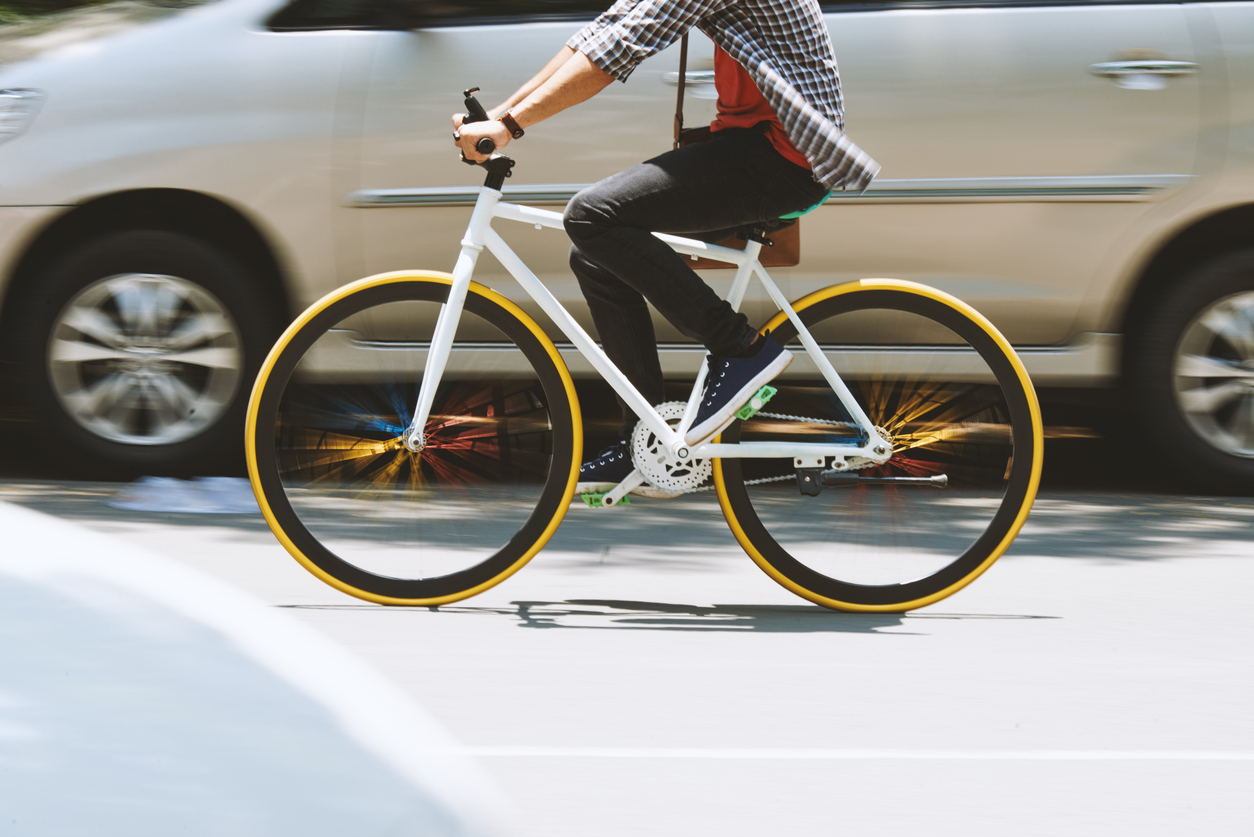When it comes to bike safety, it turns out that the Netherlands is the reigning world champion. The country is mostly known for windmills, poppy fields, and lenient laws in its capital city, Amsterdam. However, it seems it should also be known for designing advanced cycling infrastructure that protects and supports its bikers.
“Dutch-style” bike lanes are protected lanes that are usually on a sidewalk or raised level. Bike lanes are also clearly separated from the road if the speed limit reaches a certain threshold. Intersections are created to make bikers safe with a continuation of lifted lanes and protected barriers. Some Dutch cities have built bridges over busy traffic areas to help bikers avoid it entirely.
Sadly, Dutch-style bike lanes are not common in the United States. Instead, American bike lanes generally consist of street-level lanes that may or may not have a protective barrier. Two-way bike lanes are usually just one lane divided by markings on the ground. Intersections are an afterthought and bikers are not protected from cars and pedestrians.
The Study
In the U.S., a startling number of injuries occur in protected bike lanes. To find out why the Insurance Institute for Highway Safety collected and analyzed data about bike injuries. They focused on New York City, Washington D.C., and Portland, Oregon. The purpose of the study was to compare the public infrastructures for bike lanes and determine what was the safest for bike riders.
The study interviewed over 600 individuals who went to an emergency room after a bicycle accident. Information was collected about where the injury took place and it was compared to other locations on the biker’s route where an injury did not happen. Then, the researchers compiled this information to determine where injuries were most likely to take place.
What Bike Lanes Are the Safest?
The study found that the safest forms of bicycle lanes were those that were raised, separated, and protected from vehicle traffic. These lanes were the closest to the “Dutch-style” form of bike lanes. Traditional bike lanes that did not have specific marked directions ranked second. Finally, two-way bike lanes on street level, both protected and unprotected, had the most injuries reported.
It was also found that while protected bike lanes on street-level may make bikers feel safe, the number of injuries increased while using them. This is because riders were still likely to meet cars at intersections, driveways, and alleys. A rider was more likely to have an injury when they encountered intersections or other distractions.
The highest rate of the injury took place on protected bike lanes that had the most intersections, downhill grades, or crossed raised city train tracks. Temporary obstacles like cars parked illegally or delivery trucks unloading also increased the number of injuries. Rural and suburban areas around the cities had the lowest amount of injuries reported.
Weaknesses of the Study
The study had a small sample size. It only looked 600 minor injuries in three U.S. cities. It did not account for fatalities, major injuries, or other possible injuries that were not reported at the hospital emergency room. It also did not consider looking at more cities to get a broader perspective on U.S. bike lanes, including areas that have implemented non-traditional ones.
While the findings indicated that street-level protected lanes were less safe than traditional bike lanes, this may not be the truth. Many traditional bike lanes are on older and less populated streets where there are fewer bike riders. Newer protected bike lanes on street level tend to be in more busy cities where there is a higher number of bike riders, vehicles, and pedestrians. It is safe to assume that more bicycles and a higher amount of traffic would mean that there would be a higher amount of injuries.
What Does It All Mean?
Future studies should be done that help show that there are hidden dangers of protected bike lanes. They should be broader and include bicycle fatalities and major injuries. More cities should also be looked at to make sure that the comparison of these three cities is consistent with others.
It is important to note that even though injuries may have increased in protected lanes, the number of bike fatalities was noted to have decreased. This indicates that some form of protected or distinct bike lanes are safer than not having any protection at all. While cities try to keep up with the growing use of bicycles, it is perhaps smart that they also study the “Dutch-style” type of bike lanes and try to integrate more separate spaces for bikers.


